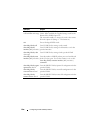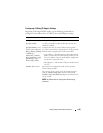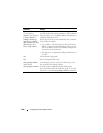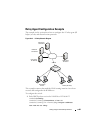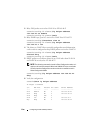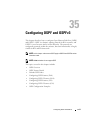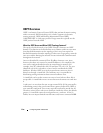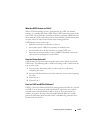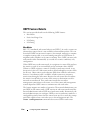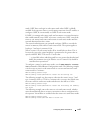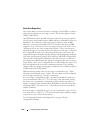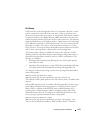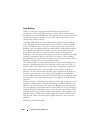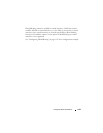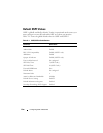
1114 Configuring OSPF and OSPFv3
OSPF Feature Details
This section provides details on the following OSPF features:
•Max Metric
• Static Area Range Cost
•LSA Pacing
•LSA Pacing
Max Metric
RFC 3137 introduced stub router behavior to OSPFv2. As a stub, a router can
inform other routers that it is not available to forward data packets. This can
be useful if OSPF has run out of resources (for example, memory) to compute
a complete routing table, or to avoid routing transients as OSPF learns its
neighbors and a complete set of routes at startup. Thus, OSPF can enter stub
router mode either automatically (as a result of a resource condition) or by
configuration.
When OSPF enters stub router mode, it re-originates its router LSAs and sets
the metric on each of its non-stub links to the maximum value, 0xFFFF.
Whenever OSPF originates a router LSA while in stub router mode, it sets
the metrics in this way. Stub router mode is global and applies to router LSAs
for all areas. Other routers prefer alternate paths that avoid the stub router;
however, if no alternate path is available, another router may compute a
transit route through a stub router. Because the stub router does not adjust
the metric for stub links in its router LSA, routes to destinations on these
networks are unaffected. Thus, stub router mode does not affect
management connections to the router, even if the router and management
station depend on OSPF routes to communicate with each other.
The feature supports two modes of operation. The network administrator can
put OSPF in stub router mode. OSPF remains in stub router mode until the
network administrator takes OSPF out of stub router mode. Alternatively, the
network administrator can configure OSPF to start in stub router mode for a
configurable period of time after the router boots up. On a stack, the startup
period also applies when a unit takes over as the management unit. The
clear configuration command also restarts OSPF in stub router



